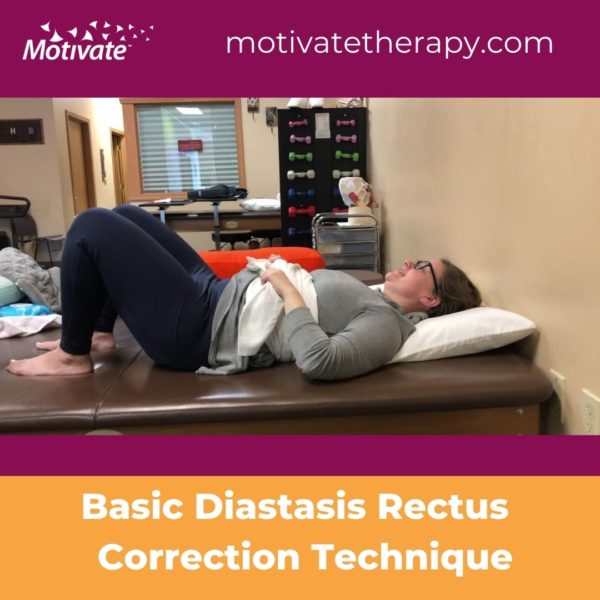Happy September!!!
This month we are going to talk about Diastasis Recti Abdominus (DRA). DRA is a common condition post pregnancy many women struggle with it.
Diastasis rectus abdominis is a separation of the outermost layer of the abdominal (stomach) muscle. This occurs commonly in pregnancy, where the connective tissue called linea alba is stretched due to the force created by the growing fetus. DRA can also occur in infants, older women, and men. Therapists (Physical and occupational) can help manage DRA in adults. DRA is common in infants. Babies with DRA are treated by their pediatrician.
It can lead to protruding stomach or “pooch” and several pelvic floor issues. During pregnancy the growing fetus creates pressure over the abdomen, sometimes abdominal muscles are not able to maintain their natural shape which leads to DRA.
The rectus abdominis muscles are connected in the center with a thin connective tissue called linea alba. As the rectus abdominis muscles moves away the connective tissue (linea alba) also stretches.
DRA usually develops in second and third trimester of pregnancy. It resolves naturally in first three months after childbirth. Other potential causes of DRA include Rapid weight changes, genetics, stomach obesity, poor training techniques or overloading the muscle wall during heavy lifting activities.
This condition can also cause lower back pain, constipation, and urinary incontinence. In rare cases it can lead to hernia, where the internal tissues and organs poke out of the abdomen. The DRA usually closes after childbirth, but some women experiences DRA even after several years of childbirth.
The symptoms to DRA can get overlooked several years and can worse due to several activities like lifting heavy weights, improper breathing during day-to-day activities etc.
Several factors like age, having multiple pregnancy, & being pregnant with multiple children makes a person prone to DRA. If severe, it changes the appearance of stomach muscles and weakens the abdominal muscles and core support. Diastasis recti during pregnancy is often presented by a ridge or tenting of the abdominal muscles. Other symptoms of diastasis recti during pregnancy include:
- Stress urinary incontinence.
- Increased ventral and umbilical hernia.
- Back pain.
- Pelvic pain.
- Weakened core muscles.
Postpartum diastasis recti complications include:
1.Back pain as it weakens the support of the back.
2. Compromised support of internal organs.
3. Decrease hip stability.
4. Pelvic floor muscle dysfunctions such as Stress urinary incontinence, Urinary urgency, constipation, dyspareunia (pain with penetration and many more).
Abdominal muscles support and protects internal organs, provides postural supports and aids in breathing. If these muscles are affected, they affect the activities of daily living and impacts the quality of life.
Sometimes DRA remains undiagnosed, and patient suffers from Pelvic dysfunction. Overactivity of oblique muscles of abdomen during daily activities and during high intensity workout also leaves the DRA condition unresolved.
At Motivate we start from improving behavioral awareness, which forms the foundation of healing your DRA. Stay tuned to learn more.
